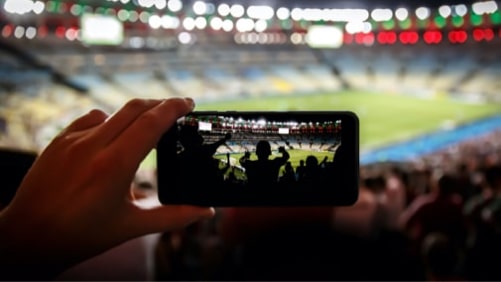Sports analytics: enabling data-driven decision-making for leagues, coaches, and more
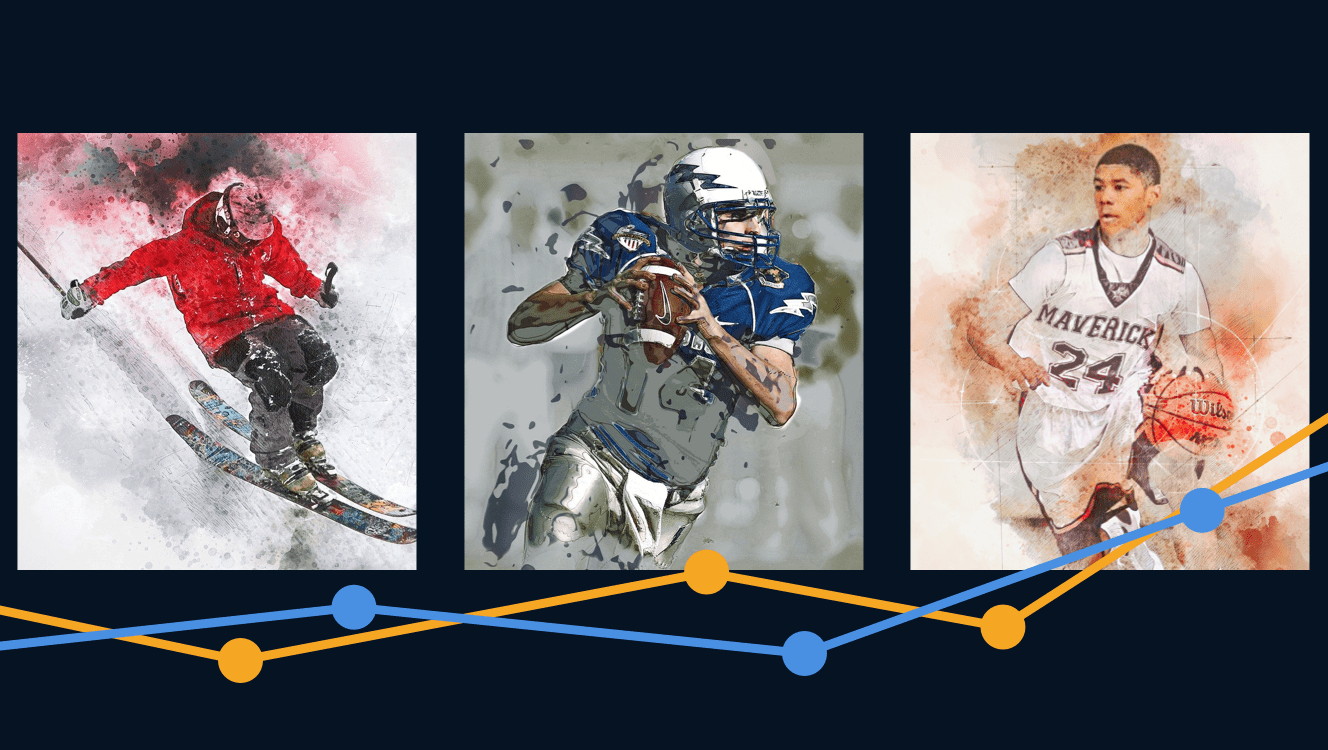
In the modern world, professional sports rely heavily on technology.
Back in the day, referees used to judge with the naked eye and coaches used to make decisions based on gut feeling. Today, advanced tech allows us to track the ball (or any other object) with a centimeter’s precision, detect slight injuries in athletes before they become obvious, and do other amazing things.
Let’s see which technology companies there are in the niche and what they offer. (It is often the case that a sports data company does more than one thing. So some companies could be put in more than one category, but we decided to include them where they fit best.)
1. Game analytics and fan engagement
Game analytics can be understood in a broad sense as any data collected during a game, or in a narrower sense as big-picture data targeted primarily towards media companies, broadcasters, and fans.
For instance, during a soccer match, broadcasters often provide stats like ball possession ratio and the number of goal attempts. And if you ever wondered where those numbers come from – well, they come from analytics companies. Let’s look at some best-known names.
Stats Perform
Stats Perform (formerly STATS) was founded in 1981. Over the years, it ballooned into a giant corporation through a series of acquisitions. By acquiring The Sports Network in 2015, the company got access to virtually every online newspaper in the U.S. In 2014, Stats Perform acquired Bloomberg Sports, along with its team of analysts and mathematicians. This gave Stats Perform strong in-house expertise in predictive modelling, which reinforced its position on the fantasy sports and the betting market.
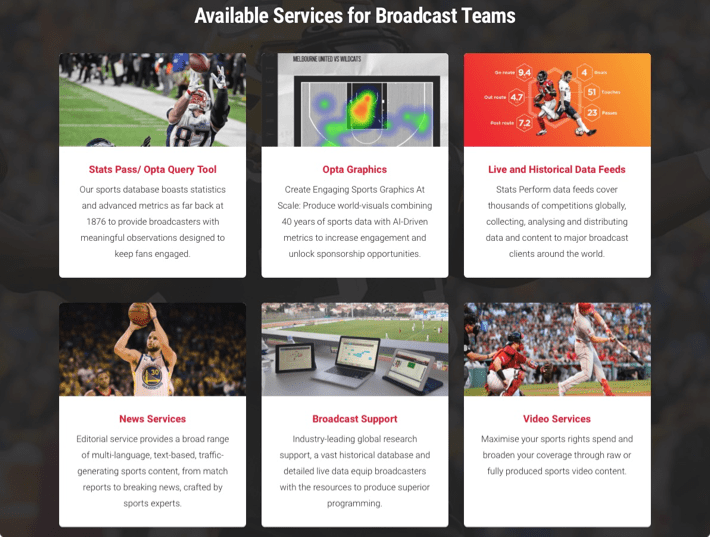
In 2019 Stats Perform merged with Opta, another well-established sports data hub founded in 1996. Opta has a variety of products targeted at TV and media companies, advertisers, fans, betting and gaming companies, and more. For instance, Opta’s Smart Stadia increases fan engagement by bringing game analytics to in-venue scoreboards, mobile devices, and AR/VR gear. It also allows advertisers to pair their ads with sports stats, making those ads more relevant and less obtrusive.
Sportlogiq
Sportlogiq is another notable player in the field. It provides AI-powered analytics based on game footage. This helps media people quickly find relevant data and tell visually-compelling stories through rich infographics and animations. Co-founder Craig Buntin said that with Sportlogiq, they built the technology he always wanted as a young athlete. Fans can experience the game in totally new ways, “as if there was an experienced coach sitting next to them” pointing out and explaining things. Here’s an example of a visualization by Sportlogiq:
Technology-wise, Sportlogic brings to the table a unique mix of technological solutions, including patented tech, which allows interested parties to derive granular insights. For instance, it has a fully-automated multi-camera tracking system that records and analyzes everything that’s happening at the arena in real time. Plus, they offer sophisticated 2D & 3D body pose estimation algorithms that, quite literally, read the players’ body language, helping those watching understand each player’s behavior and intentions.
Second Spectrum
Second Spectrum is another sports analytics company that caters to media professionals and broadcasters. It uses computer vision and machine learning to augment game footage with superimposed stats, visuals, and fun animations, enriching the viewer experience. Second Spectrum is the official tracking provider of the NBA, MLS, and Premier League. It seems their technology is particularly loved by the NBA.
Apart from engaging fans, Second Spectrum makes it easy for media companies (writers, commentators, producers) to find the right content pieces thanks to the searchable database that Second Spectrum provides.
2. Improving player performance and coaching
If you are a soccer fan like myself, you probably know why 2014 was so significant. It was that year that Germany won a shocking victory over Brazil 7:1 in the World Cup semi-finals. Not only was 7:1 an outrageous score for a semi-finals game, but it was also surprising the Germans seemed to play on a totally different level. After the match, journalists, analysts and soccer players themselves began to look into how the German national team had been training. It turned out that the squad had been using the Adidas miCoach system to track individual performance, among other things.
Fast forward to 2020, and almost every large soccer club on the planet is using some kind of player tracking equipment. Usually, it comes in the form of a matchbox-sized sensor that gets planted inside the player’s training vest (or their uniform) between the shoulderblades. At the same time, there are other interesting solutions. Let’s see what these trackers do and who carries them.
STATSport
STATSports, an Irish company started in 2007, is often named among the pioneers of athlete performance tracking. Their sensors stream player performance data in real time and make them available to players and coaches through a variety of apps. These days, STATSport offers the APEX family of products, including APEX Pro, APEX Team, APEX Coach, and APEX Athlete series.
With APEX Pro Series, for example, the player gets a wearable GPS sensor that also incorporates an accelerometer, a magnetometer, and a gyroscope to record the athlete’s parameters and push data to a tablet or a smartwatch. The solution keeps track of 260+ parameters out of the box, plus it allows the user to create custom ones. Standard metrics include speed, number of accelerations, distance covered at maximum speed, heart rate, and pulse.
APEX Coach Series, on the other hand, allows coaches to analyze their players’ stats on an individual or squad basis to improve team performance and reduce the risk of injuries. Modern player tracking sensors allow coaches and doctors to detect early signs of problems like a sprained ankle by paying attention to changes, like the player shifting weight to another foot. Here’s an example of how the U.S. Women’s National Soccer Team uses APEX Coach:
Catapult
Catapult is another company that’s been at the forefront of athlete performance tracking since 2006. It makes wearable sensors for players that can be used in training or during a game. The sensor collects 800-900 data points per second, but Catapult says these data are only as good as one’s ability to make sense of them:
When people think about the outputs that we deliver, they tend to think about single results from single sensors. For example, they think about a sensor that measures speed, and they think a typical output would be – how fast does the player run? Certainly it’s an important output and has its applications. But in fact it’s the algorithms we’ve developed that deliver most of the value.
A good example of that might be a tackle algorithm. So, obviously, there is no single sensor that says “that was a tackle” [as seen in American football – editor’s note], but we’ve been able to build an algorithm that can identify from the output of multiple sensors that a tackle event occurred.
Catapult works with clubs and federations across 40+ sports like soccer, football, baseball, basketball, cricket, rugby, ice hockey, and others.
KINEXON
KINEXON is a German company that specializes not only in sports analytics, but also in people and object tracking in general. For instance, it helps companies implement social distancing during COVID-19 by employing wearable sensors that measure distance between employees and issue a warning when the minimal distance is breached.
KINEXON has been applying its experience with object tracking to the sports industry. The company offers player- and ball-tracking technology (using ultra-wideband radar sensors), athlete performance tracking, and, most importantly, tactical analysis software for coaches.
KINEXON has worked with leagues, federations and individual experts for years to build a library for tactical events and patterns found in soccer, basketball, ice hockey, and other sports. The company’s software tracks and identifies relevant patterns during a live training or a game session, providing coaches with valuable insights.
Metrica Sports
Started in Amsterdam in 2013, Metrica Sports provides what is essentially a coaching analysis app. It allows you to play back a game in an augmented mode with data points like distance, speed, player name, etc. laid over the footage. Coaches and analysts can also save selected fragments and organize them as needed.
Metrica Play Elite plan has some nice perks like automated detection of in-footage events, autonomous game/practice recording (the camera will zoom, pan, and tilt all by itself, following all the players), and others.
Xampion
Xampion is a startup from Finland that allows you to track soccer-specific data points with a pair of smart insoles placed inside the player’s footwear. The sensors send data to a smartphone app, allowing athletes to track their sprint speed, max speed, distance travelled, and other traditional metrics. In addition, because the sensors go inside the shoes, they add some interesting metrics like right foot vs left foot touches, contact point (inside/outside) and type, and kick speed.
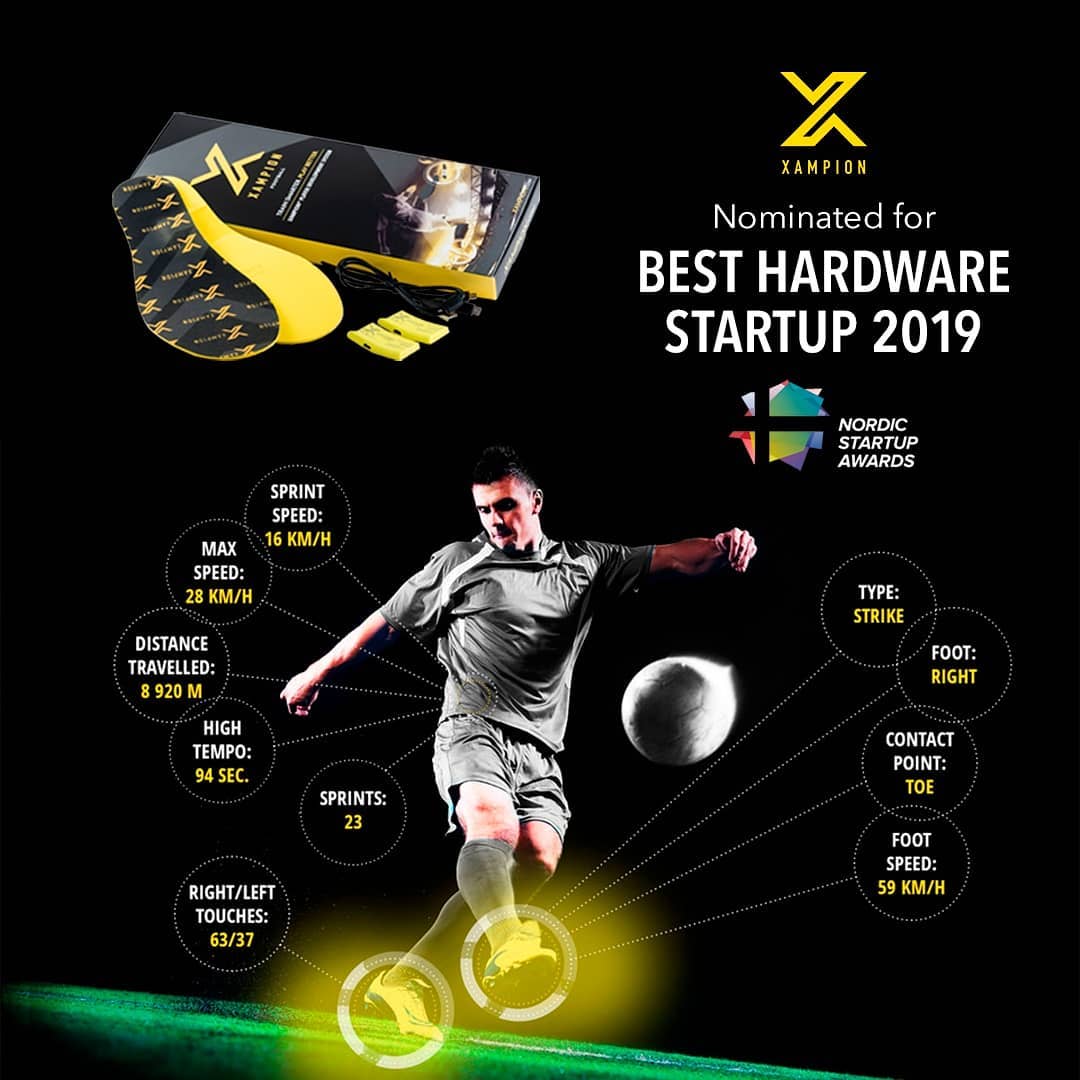
myKicks by Formalitics
Another piece of technology that pretty much everyone can afford is myKicks, by Australia-based AI startup Formalitics. It’s a simple smartphone app for soccer players that lets one record and assess their goals. Users can share their results with the community and see how they stack up against peer players from around the world. The app is free and offers in-app purchases such as a Penalty Masterclass.
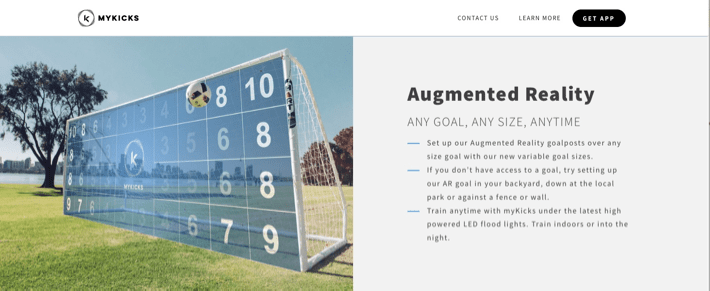
3. Helping talent discovery (scouting)
Many of the abovementioned solutions offer analytics aimed at scouting professionals whose job is to head-hunt sports talent. At the same time, there are specialized services in this field.
Wyscout
Wyscout is an Italian company founded in 2004. It helps both player agents and scouts do their job in the world of soccer. With its focus on soccer, Wyscout claims to have “the largest video archive in the world,” with more than 2,000 new games uploaded weekly.
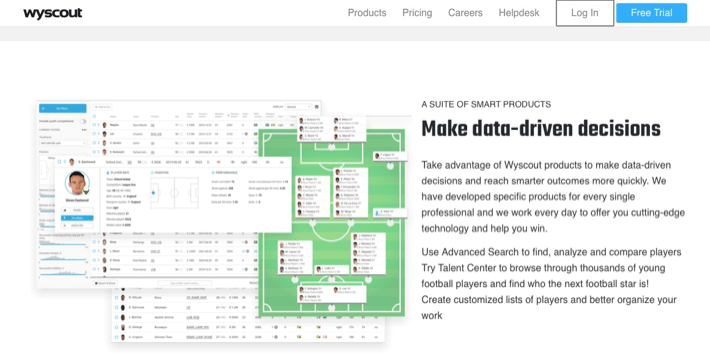
Thanks to Wyscout, scouts have at their disposal not only all games/matches from all major soccer championships, but also a searchable database of players that they can browse by a variety of parameters (age, position, achievements, etc.). The platform also helps agents create promotional videos of players they work with, discover new talent, and manage their portfolio.
smarterscout
Created by North Yard Analytics founder Dan Altman, smarterscout provides a “fast, easy-to-use platform for evaluating the performance of soccer players around the world.” It allows scouts to browse a database of players by name, club, skill, level, and other parameters. smarterscout has a generous free-of-charge Lite plan that lets one search by player’s name, metrics, and similar players and utilize the smartermaps feature. Paid plans give you access to more leagues, make it easier to identify top players, and more.
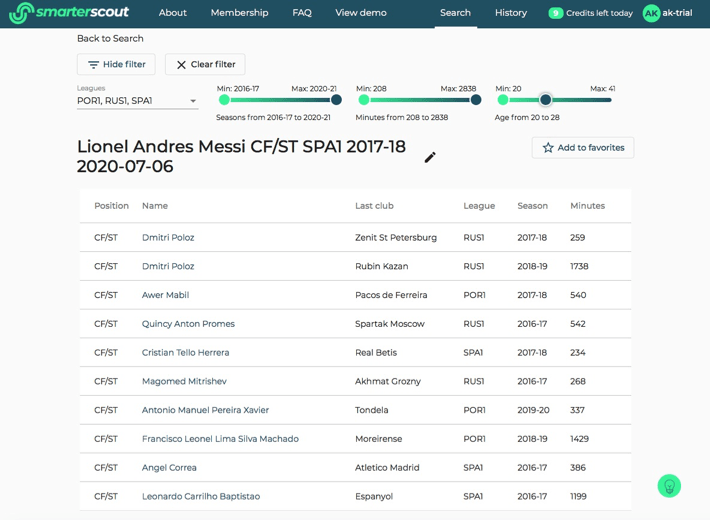
TL; DR
In this article, we tried looking at various sports analytics solutions available to sports leagues, media and broadcasting companies, sports fans, players, coaches, analysts, player agents, and scouts. These tools not only make these professionals’ jobs easier, but can give one competitive advantage, especially when it comes to beating rival teams on the playing field.
Related Blogs

eSports may soon overtake traditional sports (analysis)
LEARN MORE